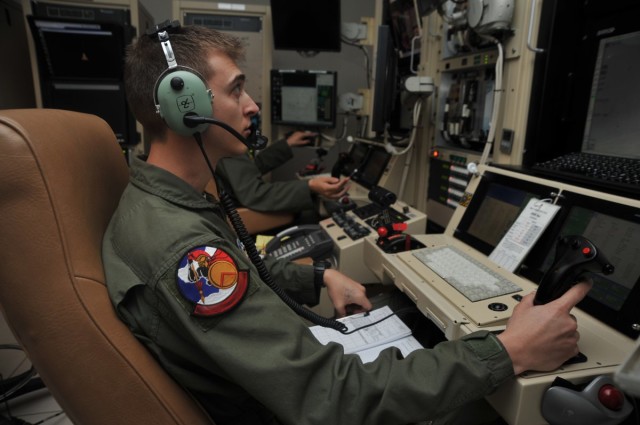The US Air Force has outlined steps it will take to improve the health and morale of its remotely piloted aircraft force, including new operating bases and doubling the total number of RPA flying squadrons. The steps, outlined in a news release follow a months-long review of the RPA force, called the Culture and Process Improvement Program.
In addition to growing the bases and squadrons, Air Combat Command plans to create a new wing to normalize the organizational structure of RPA squadrons; increase RPA manning by up to 3,000 airmen; define career tracks for officer and enlisted operators and maintainers; study the promotion and education tracks for RPA officers; study the feasibility of a single specialty code for RPA personnel; and streamline processes to enable more Guard and Reserve forces to support the mission. “Our RPA enterprise was born in combat and recently surpassed 20 years of service, many of which were executed at surge levels,” ACC Commander Gen. Hawk Carlisle said in the statement. “We owe it to our airmen to remove the daily stressors that are responsible for the challenging environment they are operating in.
The Air Force will need help implementing its new plan to overhaul the remotely piloted aircraft community, said Gen. Hawk Carlisle, commander of Air Combat Command. “Resourcing these changes is not within ACC’s direct control,” said Carlisle in a Dec. 10 release. “So we will have to work with the Department of Defense, the White House, and Congress on the resources to get this done.”
Draft language of the Fiscal 2016 National Defense Authorization Act includes funding to increase bonuses for RPA operators, after the Air Force petitioned for approval to reallocate $100 million in funding, and called for new bonuses of $15,000 a year for five- or eight-year commitments. In September, the Air Force announced that Defense Secretary Ash Carter had approved a plan to decrease USAF’s RPA flight requirements from 65 combat air patrols to 60. However, the Army will fly 16 CAPs with its MQ-1C Gray Eagle fleet and US Special Operations Command contractor-operated aircraft will fly about 10 CAPs, providing some relief to the Air Force is it attempts to catch up on training new operators, USAF Deputy Chief of Staff Lt. Gen. Bob Otto told reporters in October. At the time, the Air Force was flying 61 CAPs, Otto said.
Photo: An MQ-1 Predator aircrew member searches for a training target on the Nevada Test and Training Range June 27, 2013, during the 432nd Wing Hunt, a remotely piloted aircraft competition. [Photo edited for security reasons] Air Force photo.
Source: US Air Force Magazine

